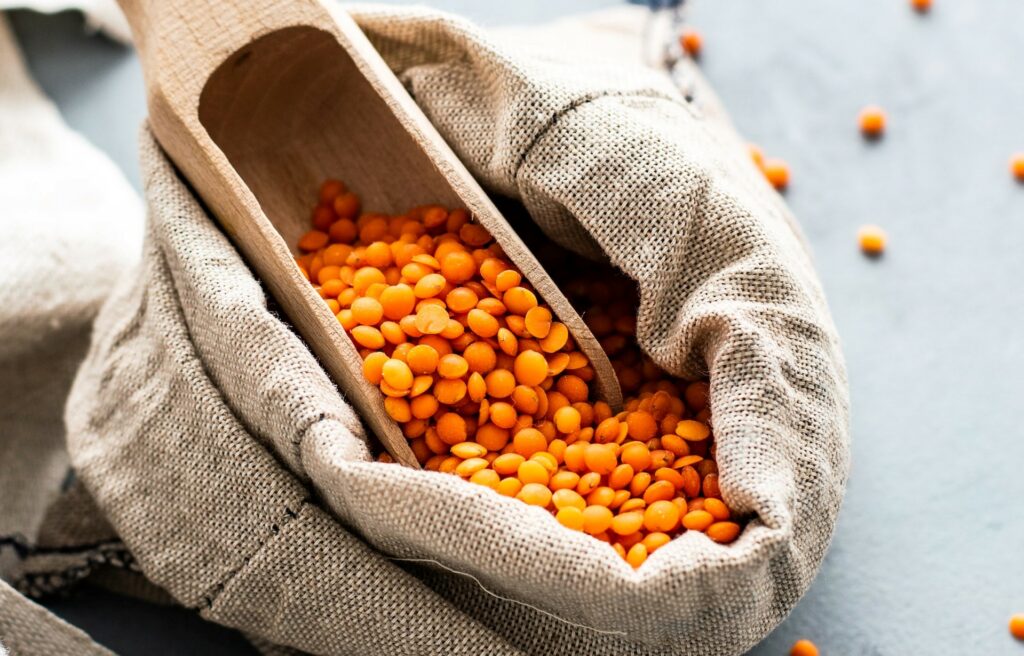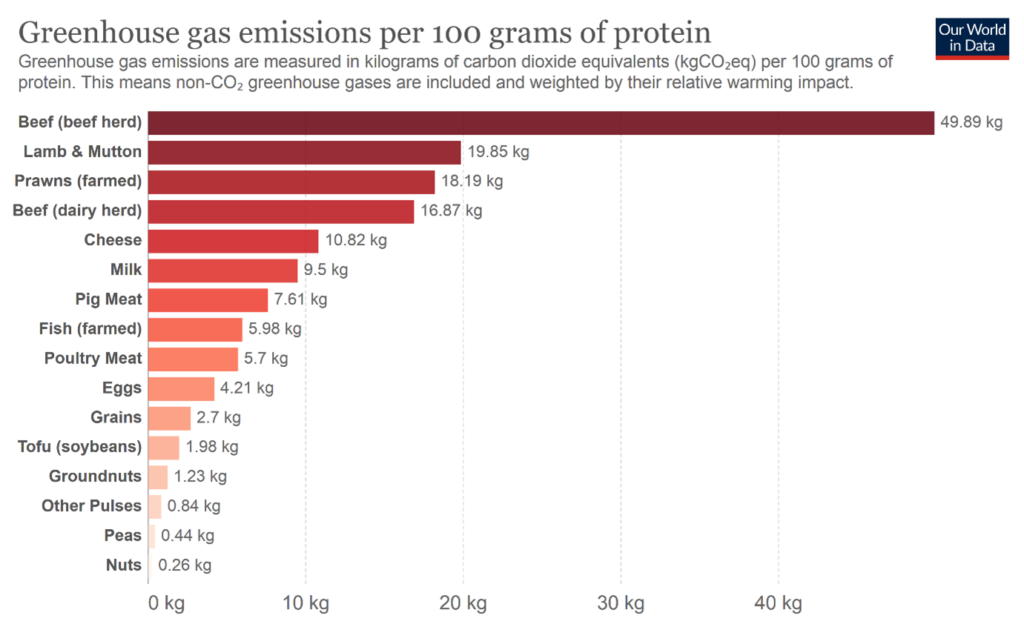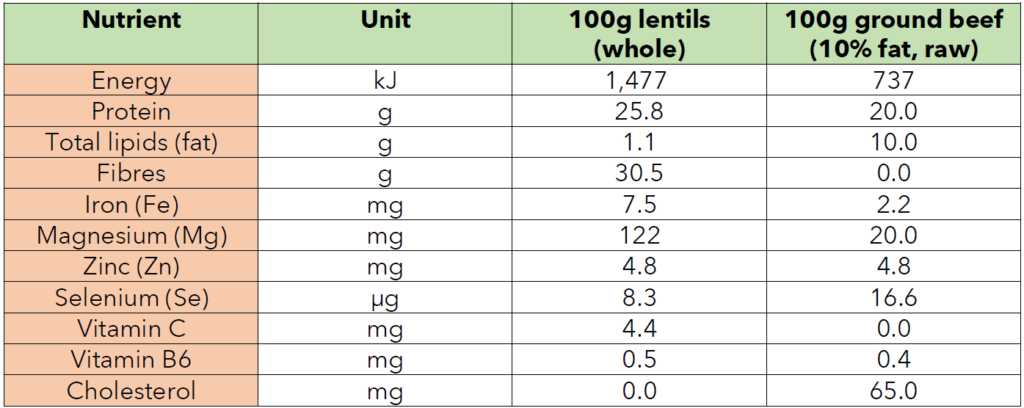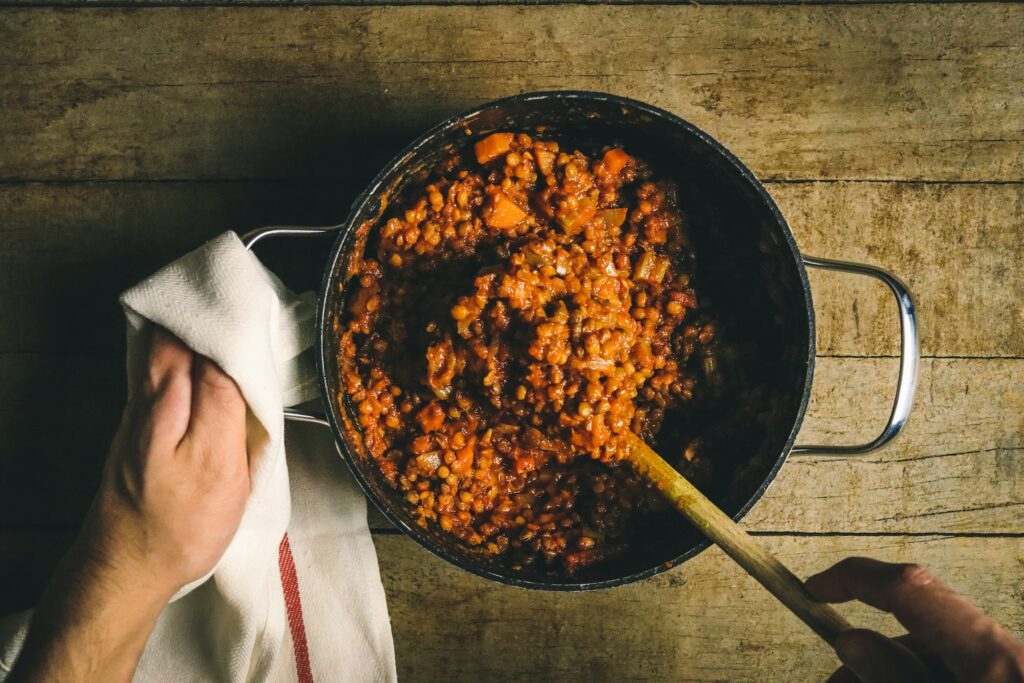Lentil is good for you! (And for the planet as well)

The proverbial saying “You are what you eat” is probably among the ones where, whoever the addressee may be, eye-rolling will be a likely consequence. Generally, most people are not particularly fond of being judged on their eating habits and diets continue to be a realm of life where tradition, culture, and routine continue to be major factors in decision-making. Yet, in the face of climate change, this saying has a recharged meaning. Globally, agriculture and food-production account for 10-12% of greenhouse gas emissions (in Ireland, this share is actually at a staggering 33% due to extensive livestock farming). Under business-as-usual consumption scenarios, due to a growing world population and a similarly growing global middle class, associated with increased demand for meat and dairy products, the global methane (CH₄) emissions are projected to increase by 70% by 2055. With methane, while relatively short-lived, being an incredibly potent greenhouse gas (25-times as powerful as CO²) and livestock farming additionally being closely linked to deforestation, this is the exact opposite direction of where we need to go. What you eat not only determines your health but also that of the planet.
Finding and exploiting viable, healthy, and environmentally friendly protein sources has been the cause of ongoing research (and debates) and lentil, among other legumes, have emerged as a so-called superfood. The remainder of this post highlights the (unused) potential of lentil.

Lentil is particularly prevalent in the Mediterranean and Indian kitchen but is not very common elsewhere, which is a shame given their wide range of beneficial characteristics and their general applicability. Lentil is more nutrient-dense than beef, providing vitamins, minerals, protein, and fibre all while containing less fat and fewer calories. Gram per gram, lentils contain more protein than beef. In addition to that and already mentioned in ancient treatment cures, lentils are nowadays proven to reduce the risk and incidence of cardiovascular diseases (including hypertension) (Flight & Clifton 2006), various cancer types (Akcicek et al. 2005), constipation, while also, thanks to the high fiber content, are beneficial for increasing satiety, thus potentially limiting food intake and risk for obesity (McCrory et al. 2010). All in all, lentil provides an excellent source of macro- and micro-nutrient, as the table below illustrates.

The unparalleled potential of lentil does not stop here, however. Like other legumes, lentil provides promising properties for climate change mitigation due to their nitrogen-fixing capacities (a greenhouse gas 300-times as potent as CO²!). The overarching question now remains to be whether it is realistic and realisable to rapidly upscale legume cultivation and consumption and further research is required regarding environmental factors and growing conditions and their impact on the beneficial bioactive components (Irakli et al. 2021). Furthermore, the aforementioned cultural eating habits will pose significant challenges to change behaviour of individuals and yet whole societies.
As a start and to aid in overcoming this obstacle, I am delighted to have found a recipe for Irish Stew! Of course, best served with a pint of the unofficial national drink whose slogan I borrowed for my headline. Enjoy!
Irish Stew with lentil (recipe provided by Bryanna Grogan on food.com)

Ingredients:
- Onions (2, medium-sized
- Unbleached flour (1⁄4 cup)
- Water (4 cups)
- Mushrooms (2 cups, thickly sliced)
- Carrots (1 cup, sliced)
- Turnips1 cup
- Celery (1 cup, diced)
- Split red lentils (1⁄2 cup)
- Fresh parsley (1⁄2 cup)
- Braggs liquid aminos or soy sauce (1⁄4 cup)
- Vegetable bouillon cubes (3)
- Bay leaf (1)
- Marmite (2 teaspoons)
- Sugar (1 teaspoon)
- Thyme (1⁄4 teaspoon)
- Rosemary (1⁄4 teaspoon)
- Marjoram (1⁄4 teaspoon)
- Pepper
- Textured vegetable protein (1 cup, chunks)
Directions:
- Ready in 30 minutes; serves 6 people.
- In a large, lightly oiled pot steam fry the onion until it begins to soften (i.e., cook it in a bit of water) Add flour and stir around completely.
- Add the remaining ingredients, mix well, bring to boil. Cover and simmer on low for 30 minutes or until vegetables are done.
- Taste and season.
- Note: The turnips should be large dice. The carrots round sliced. You may use other yeast extract than marmite.
Sources and additional information:
- Akcicek, E., Otles, S., & Esiyok, D. (2005). Cancer and its prevention by some horticultural and field crops in Turkey. Asian Pac J Cancer Prev, 6(2), 224-230.
- Faris, M. e. A.-I. E., Takruri, H. R., & Issa, A. Y. (2012). Role of lentils (Lens culinaris L.) in human health and nutrition: a review. Mediterranean Journal of nutrition and metabolism, 6(1), 3-16.
- Foyer, C. H., Lam, H.-M., Nguyen, H. T., et al. (2016). Neglecting legumes has compromised human health and sustainable food production. Nature Plants, 2(8), 16112.
- FAO (2016). Pulses: nutritious seeds for a sustainable future. Special Report. Rome.
- Flight, I., Clifton, P. (2006). Cereal grains and legumes in the prevention of coronary heart disease and stroke: a review of the literature. Eur J Clin Nutr, 60(10), 1145-1159.
- Irakli, M., Kargiotidou, A., Tigka, E., Beslemes, D., Fournomiti, M., Pankou, C., Stavroula, K., Tsivelika, N., & Vlachostergios, D. N. (2021). Genotypic and Environmental Effect on the Concentration of Phytochemical Contents of Lentil (Lens culinaris L.). Agronomy (Basel), 11(6), 1154.
- McCrory, M. A., Hamaker, B. R., Lovejoy, J. C., & Eichelsdoerfer, P. E. (2010). Pulse consumption, satiety, and weight management. Advances in nutrition (Bethesda, Md.), 1(1), 17-30.
- Poore, J., & Nemecek, T. (2018). Reducing food’s environmental impacts through producers and consumers. Science, 360(6392), 987-992.
- Popp, A., Lotze-Campen, H., & Bodirsky, B. (2010). Food consumption, diet shifts and associated non-CO2 greenhouse gases from agricultural production. Global Environmental Change, 20(3), 451-462.
- Thavarajah, D., Thavarajah, P., Wejesuriya, A., Rutzke, M., Glahn, R. P., Combs, G. F., & Vandenberg, A. (2011). The potential of lentil (Lens culinaris L.) as a whole food for increased selenium, iron, and zinc intake: preliminary results from a 3-year study. Euphytica, 180(1), 123-128.